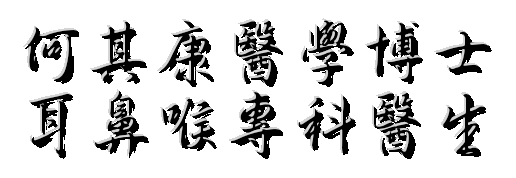TONSILLECTOMY AND ADNOIDECTOMY SURGERY: POST OPERATIVE INSTRUCTIONS
Tonsillectomy and adenoidectomy is a safe and commonly performed surgery. This instruction sheet is designed to help patients better understand what to expect- and what to watch for- after surgery. If questions or problems remain after reading this sheet, please call our office.
PAIN: Tonsillectomy and adenoidectomy sometimes hurt. It seems to hurt adolescents and adults more than young children. Children, after adenoidectomy, may also complain of neck stiffness. Sometimes pain will increase over the first 3 to 5 days after surgery and may include ear pain. In almost all cases pain will begin to decrease after 7 days. The best way to manage pain in young children is Tylenol in liquid form. Follow the label directions and give tylenol about every 3-4 hours. For adolescents and adults, a prescription for Tylenol with codeine will be given to you. If the pain increases 3-5 days after surgery, you can come in for a steroid injection to greatly improve the inflammation and pain. It is not uncommon for some patients to have continued pain throughout the second week.
PLEASE AVOID ASPIRIN, BUFFERIN, ADVIL, MOTRIN, ALEVE, IBUPROFEN OR ANY OTHER PAIN RELIEVER AS THEY ALL INCREASES RISKS OF BLEEDING.
EATING AND DRINKING: Of course, the pain of tonsillectomy makes eating and drinking difficult. Although your body can go without food for several days, it needs fluid everyday. It is VERY important that the patient drink water, non-citrus juices (apple, grape, Hi-C) and soups after surgery. Popsicles, ice cream and Jell-O are a good start. It is very important to stay hydrated. Fluids are more critical than calories the first couple days. Continually take sips of water or Gatorade when you are awake. Start with “baby” foods like soup, pudding and apple sauce. You may then slowly increase your diet to soft foods after the first day; such as ground meat, fish, pasta, boiled vegetables and canned foods. Chew your food very well and drink plenty of fluids. Avoid spicy, hard, dry and crunchy foods such as potato chips, French fries and raw vegetables. These can hurt your throat and possibly cause some bleeding. Do not use straws and other sharp items when you eat and drink.
Take pain medicine 30 minutes before meal times--maximum effect of pain medicine is 30 minutes to 2 hours after it is taken. Do not eat any solid or sharp foods (toast, cookies, pizza, etc.) .
ACTIVITY: Children may take 1 to 2 weeks to "be themselves" in terms of resuming preoperative activities. Returning to school will depend upon the speed of your child's recovery. As your child begins to feel better he/she can help with light daily chores, go out with the family, visit friends, etc. Thereafter, you may slowly increase activity as tolerated, but avoid bending, straining or strenuous activity for 2 weeks. Most patients return to school/work 7-10 days after surgery, when they are taking minimal amounts of pain medication.
FEVER & INFECTION: Fever up to 101 degrees after tonsillectomy is very common--treat it with Tylenol and fluids. Infection after tonsillectomy is very uncommon. You will be given a prescription for antibiotic liquid to take for a week.
BLEEDING: Bleeding is the major risk of tonsillectomy. It can occur as early as the night of surgery, or as late as 10 days or more after surgery. Bleeding is unusual--it occurs in 3 out of evey 100 patients. Because bleeding can be very brisk, or sudden, all cases of bleeding after tonsillectomy should be discussed with a doctor. For this reason, it is very important that for 2 weeks after surgery you remain comfortable driving distance of the hospital. Do not plan any trips away, or leave the patient alone. If there is significant bleeding, notify your doctor and go immediately to the Emergency Room.
SCABS: The white areas in the throat are normal (they are scabs over the healed areas).
When these scabs come off on the fourth to eighth day after surgery, there may be a little spotting of blood. This spotting is of no consequence.
EAR PAIN: You may also experience some ear pain. This is not an ear infection; but a (referred) pain transmitted from the throat and may occur when you swallow.
REMEMBER: Your body is undergoing a gradual healing process. Soon you will be feeling better than ever!



